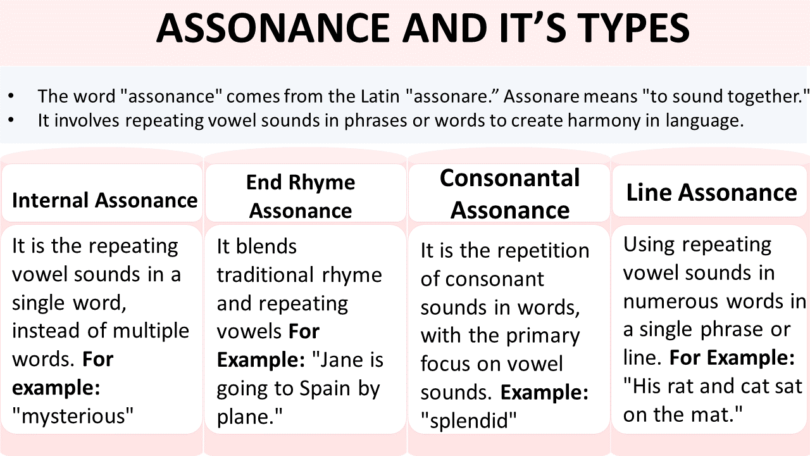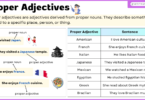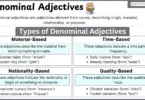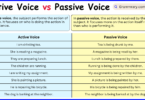Table of Contents
ToggleAssonance Introduction:
The word “assonance” comes from the Latin “assonare.” Assonare means “to sound together.” It reflects the value of assonance, which involves repeating vowel sounds in phrases or words to create harmony in language. Let’s explore Definition, examples and Types of Assonance.
Meaning and Definition:
It is the use of words in a consecutive manner, that have identical vowel sounds. It is considered as a variation of alliteration. Let’s explore definitions from different dictionaries.
According to the Oxford Learner’s Dictionary, it is the effect produced when words contain two syllables with the same vowel sounds placed together, producing the same vowel sound, but consonant sounds are different
The Cambridge Dictionary defines it as the similar sounds between two close syllables, produced by the same vowels but, the consonants are different.”
Collins Dictionary describes it as, using identical vowel sounds but different consonant sounds; or different wovel sounds with the same consonant sounds in the subsequent stressed syllables or words, in a line of verse.
There are multiple definitions according to the Merriam-Webster Dictionary, it is the close juxtaposition of identical wovel sounds. Another definition is the use of repeating vowels without repeating consonants. It describes it as the alternative of rhyme. One definition is the resembling sounds in words or syllables.
Examples:
- I like her voice.
- I love to bake cupcakes and pancakes.
- We bought nine kites for the kids.
- He ignites the light.
- Light the fire.
- Besides the lake, there’s a snake.
Use of Assonance in a Sentence?
After exploring Assonance Meaning and Assonance Examples, let me ask you a question. Does the use of rhyming words in a sentence is assonance? You are right if your answer is “NO.”Rhyme refers to the use of words with the same vowel or consonant sounds at the end of words. Whereas, assonance involves using the same syllables and vowels at the beginning, middle, or end.
Using assonance does not limit you to wse words having similar sounds right one after the other. It can be used in between words. The idea is not about consecutive use, it’s about use in the same sentence.
History:
In ancient times, it was a basic element in poetry and rhetoric. It is the use of repeating vowel sounds for helpful and creative purposes. It has a rich and diverse history.
Ancient Oral Traditions: Storytellers and poets used this figure of speech to enrich the rhythm of their content. This was dominant in cultures including ancient Greece, China, Rome, the Middle East, and India. There, oral poetry, and epic recitations were vital to the expression of culture.
Importance of Assonance in Writing?
It can be used in a sentence for the following reasons.
- To produce rhythm
- To gain the attention of the audience
- To create clarity
- To create a tone and meaning
- To highlight the theme.
Types of Assonance:
Let’s explore the types of Assonance with Definitions and Examples.
- Internal
- Consonantal
- End Rhyme
- Line







